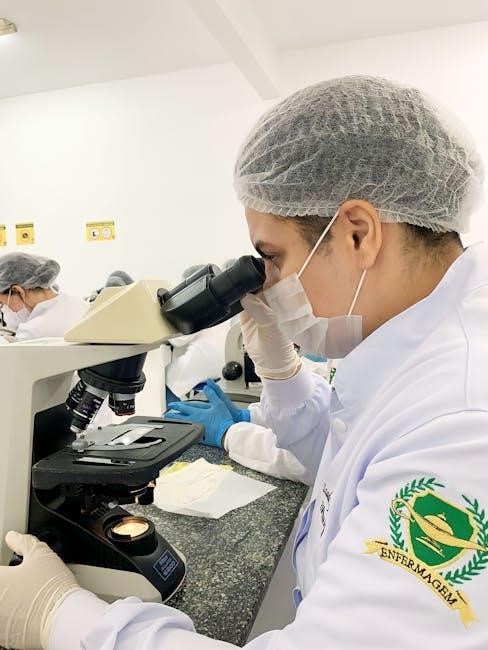Engage students with an interactive crossword puzzle that reinforces key scientific method concepts. Clues focus on variables, hypotheses, and experimental steps, making learning fun and effective.
Overview of the Scientific Method
The scientific method is a systematic process used to explore and understand phenomena. It begins with identifying a problem or question, followed by research to gather relevant information. A hypothesis is then formulated to predict outcomes. The experiment is designed, incorporating variables such as independent, dependent, and controlled factors. Conducting the experiment involves following a structured procedure to collect data. Afterward, the data is analyzed to draw meaningful conclusions. This method encourages critical thinking, logical reasoning, and evidence-based decision-making. By breaking down complex concepts, the scientific method provides a clear framework for solving problems and advancing knowledge.
Importance of Crossword Puzzles in Education
Crossword puzzles are engaging tools that enhance learning by making complex concepts interactive. They improve vocabulary, promote problem-solving skills, and reinforce retention of key terms. By incorporating scientific method terminology, crosswords help students connect abstract ideas to practical applications. They encourage active thinking and logical reasoning, fostering a deeper understanding of concepts like hypotheses, variables, and experimental design. Crosswords also cater to diverse learning styles, making them an inclusive educational resource. Their structured format provides immediate feedback, allowing students to track their progress. This interactive approach not only simplifies the scientific method but also builds confidence and critical thinking abilities, essential for academic success.

Key Components of the Scientific Method
The scientific method involves identifying a problem, conducting research, forming a hypothesis, testing variables, designing experiments, collecting data, analyzing results, and drawing conclusions. Each step builds logically.
Step 1: Identifying a Problem and Posing a Question
This initial step of the scientific method encourages curiosity and observation. It involves identifying a problem or phenomenon that sparks interest and formulating a specific, testable question. For example, “What affects plant growth?” Questions should be clear and focused to guide further investigation.
Step 2: Research and Hypothesis
After identifying the problem, the next step involves conducting research to gather relevant information. This helps in understanding the context and forming a hypothesis. A hypothesis is an educated guess that explains the observed phenomenon. It should be specific, testable, and falsifiable. For instance, “If we increase the amount of sunlight, then plant growth will improve.” The hypothesis guides the experiment, ensuring it is focused and purposeful. This stage is crucial as it sets the foundation for the experimental design and data collection that follow.
Step 3: Variables in an Experiment
In the scientific method, variables are factors that can influence the outcome of an experiment. They are categorized into three types: independent, dependent, and controlled. The independent variable is the factor manipulated by the researcher, while the dependent variable is the outcome being measured. Controlled variables remain constant to ensure a fair test. Identifying and defining variables is crucial for a clear and focused experiment. For example, in a plant growth study, the independent variable could be the amount of water, and the dependent variable would be the growth rate. This step ensures the experiment is structured to test the hypothesis effectively.
Step 4: Experimental Design
Experimental design is the blueprint for testing a hypothesis, ensuring the experiment is conducted systematically. It involves defining the procedure, selecting tools, and determining how to measure results. A well-planned design helps minimize errors and biases, making the experiment reliable. Key elements include identifying the control group, which remains unchanged, and the experimental group, where the independent variable is applied. Clear instructions and precise measurements are crucial for consistency. This step ensures that the experiment can be replicated and the results validated. By organizing the test conditions and data collection methods, experimental design provides a structured approach to investigating the hypothesis effectively.
Step 5: Conducting the Experiment
This phase involves implementing the experimental design, carefully following the outlined procedure. Researchers execute the steps, manipulate variables, and collect data; Precision is key to ensure accurate results. Observations are recorded systematically, and measurements are taken using specified tools. The experimental and control groups are treated according to the design, minimizing external influences. Documentation is thorough, capturing every detail to facilitate analysis. Conducting the experiment is where the hypothesis is tested, and initial data is gathered, forming the foundation for the next step: analyzing the results. This hands-on approach allows scientists to explore their questions and uncover potential answers.
Step 6: Analyzing Data
After conducting the experiment, the next critical step is analyzing the collected data. This involves organizing and interpreting the information to identify patterns, trends, or relationships. Researchers use various tools, such as graphs, charts, and statistical methods, to evaluate the results. The data is compared to the hypothesis to determine if it supports or contradicts the initial prediction. This phase requires careful scrutiny to ensure accuracy and validity. Any inconsistencies or unexpected outcomes are noted for further investigation. By thoroughly analyzing the data, scientists can draw meaningful conclusions and refine their understanding of the problem. This step is essential for validating the experiment’s results and guiding the final conclusion.

Step 7: Drawing a Conclusion
The final step in the scientific method involves drawing a conclusion based on the data analysis. This is where researchers determine whether the hypothesis is supported or rejected. If the data aligns with the hypothesis, it is considered valid, but if not, the hypothesis may need revision. A conclusion summarizes the findings, explaining how they relate to the initial question. It is crucial to avoid introducing new information or making unsupported claims. The conclusion should be clear, concise, and backed by evidence from the experiment. This step completes the scientific process, providing a resolution to the problem and potentially leading to further investigations or applications of the findings.
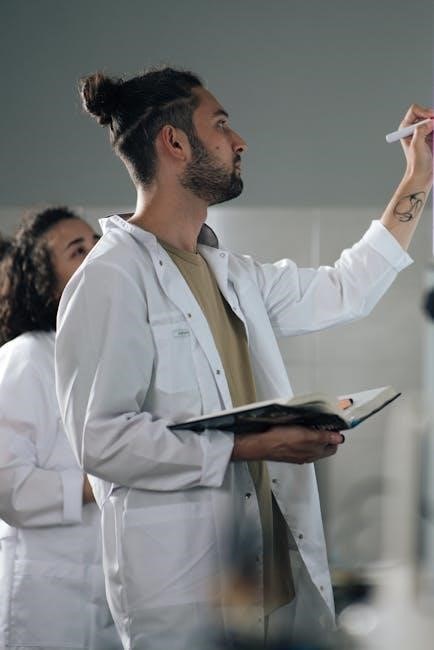
Structure of a Scientific Method Crossword Puzzle
A scientific method crossword puzzle typically includes Across and Down clues, key terms, and definitions. This structure organizes concepts like variables, hypotheses, and procedures in an engaging grid format.
Across Clues
Across clues in a scientific method crossword puzzle are designed to test knowledge of key concepts. Examples include:
Hypothesis – A educated guess that answers the question.
Variable – A factor that can change in an experiment.
Procedure – Steps taken during the experiment.
These clues challenge students to recall definitions and processes, reinforcing their understanding of scientific principles. Each clue aligns with a specific term, ensuring clarity and focus. This format helps students connect concepts with their definitions, making learning interactive and engaging.
Down Clues
Down clues in a scientific method crossword puzzle complement the across clues by offering additional challenges. Examples include:
Control Group – The group in an experiment that remains unchanged.
These vertical clues often focus on broader concepts, such as the purpose of experiments or the definition of data analysis. Each clue is crafted to ensure students think critically about the scientific process. By solving down clues, learners gain a deeper understanding of how experiments are structured and conducted. This interactive approach makes complex concepts more accessible and engaging for students of all levels.
Key Terms and Definitions
The scientific method crossword puzzle incorporates essential terms that form the foundation of scientific inquiry. Variable refers to factors that can change in an experiment, while Hypothesis is an educated guess tested through investigation. Procedure outlines the step-by-step process of conducting an experiment, and Conclusion summarizes the findings. Other terms include Control Group, the unchanged group used for comparison, and Data, the information collected during the experiment. These terms are central to understanding the scientific method and are frequently used in crossword clues to reinforce their importance in experimental design and analysis. Mastering these concepts enhances critical thinking and problem-solving skills.
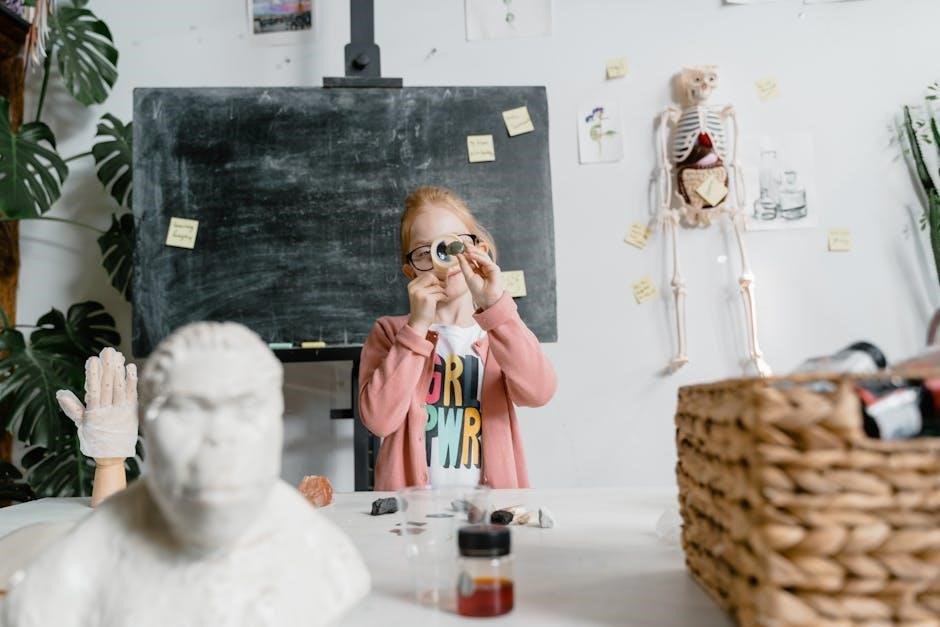
Common Clues and Answers in the Puzzle
Common clues include terms like Variable, Hypothesis, and Procedure, with answers central to the scientific method. These terms form the basis of crossword puzzle challenges.
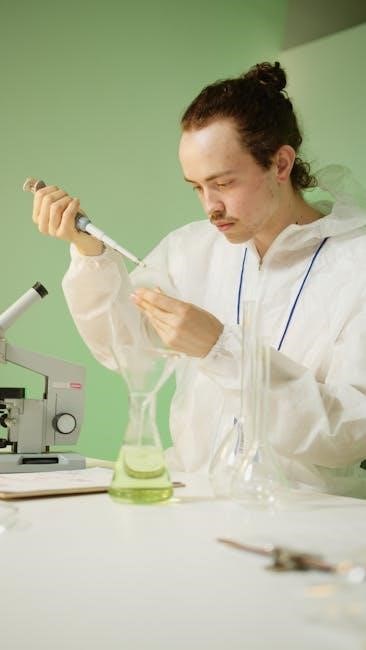
Variable

The term “variable” is a fundamental concept in scientific experiments, often appearing in crossword puzzles. It refers to factors that can change or be controlled during an experiment. In a crossword puzzle, the clue might be “A factor that can be changed or controlled in an experiment.” The answer would be “variable.” This term is essential for understanding experimental design, making it a common feature in educational puzzles. By incorporating such terms, crossword puzzles help reinforce key scientific concepts in an engaging manner.
Hypothesis
A hypothesis is a key component of the scientific method, frequently featured in crossword puzzles. It is an educated guess that attempts to explain a phenomenon or answer a research question. In a crossword puzzle, a clue might read, “An educated guess that explains observations,” with the answer being “hypothesis.” This concept is crucial for guiding experiments and testing theories. Crossword puzzles that include terms like “hypothesis” help students engage with scientific terminology in a fun and interactive way, reinforcing their understanding of the scientific process and its various components. This approach makes learning more enjoyable and effective.
Procedure
The procedure in the scientific method is the detailed, step-by-step plan outlining how an experiment will be conducted. It includes listing materials, describing actions, and explaining how data will be collected. Crossword puzzles often feature “procedure” as a key term, with clues like “Steps taken during an experiment.” This term is essential for ensuring experiments are systematic and reproducible. Educational resources, such as PDFs and online puzzles, frequently incorporate “procedure” to help students grasp its importance. By solving these puzzles, learners engage interactively with the concept, reinforcing their understanding of the scientific process. This makes learning both enjoyable and effective.
The conclusion is the final step in the scientific method, where researchers summarize findings and determine if the hypothesis is supported. Crossword puzzles often include “conclusion” as a key term, with clues like “Final step in an experiment” or “Summary of results.” Solving for this term helps students understand its role in validating hypotheses and guiding future research. Educational resources, such as PDFs and online puzzles, emphasize the importance of drawing logical conclusions. By engaging with these puzzles, learners gain a deeper understanding of how experiments lead to meaningful outcomes, making the scientific method more accessible and engaging. This interactive approach fosters better retention of key concepts.
Control Group
The control group is a crucial element in experiments, providing a baseline for comparison. In crossword puzzles, “control group” often appears as a clue, with answers like “unchanged group” or “comparison group.” Educational resources, such as PDFs, highlight its importance in isolating variables. By solving for this term, students understand how it ensures experimental validity. Crossword puzzles make learning about control groups engaging, reinforcing their role in scientific research. This interactive method helps students grasp how control groups are essential for drawing accurate conclusions, making complex concepts more approachable and memorable through fun and challenging activities.

Benefits of Using Crossword Puzzles for Learning
Crossword puzzles enhance vocabulary, improve critical thinking, and reinforce scientific concepts. They offer an engaging way to learn and retain information, making education enjoyable and interactive.
Enhancing Vocabulary
Crossword puzzles are an excellent tool for expanding vocabulary, especially in the context of the scientific method. By incorporating key terms such as hypothesis, variable, and procedure, students are exposed to essential scientific language. Engaging with these puzzles helps learners associate words with their meanings, fostering a deeper understanding of scientific concepts. The repetitive use of these terms in different clues and contexts reinforces memory retention. Additionally, crossword puzzles encourage active learning, as students must think critically to fill in the correct answers. This interactive approach makes vocabulary acquisition both fun and effective, preparing students to communicate confidently in scientific discussions and experiments.
Improving Critical Thinking
Crossword puzzles designed around the scientific method encourage students to think analytically and logically. Each clue requires problem-solving skills, as learners must decipher definitions and connect them to the correct terms. This interactive approach enhances critical thinking by challenging students to analyze relationships between concepts. For example, understanding how a hypothesis leads to an experiment or how a variable affects results fosters a deeper grasp of scientific processes. By engaging with these puzzles, students develop the ability to approach problems systematically, a key skill in both academics and real-world applications. This method of learning makes complex ideas more accessible and memorable.
Reinforcing Scientific Concepts
Scientific method crossword puzzles are an engaging tool for reinforcing key concepts, such as variables, hypotheses, and experimental procedures. By solving clues related to these terms, students gain a stronger understanding of their meanings and applications. For example, a clue like “A prediction based on research” leads to the answer hypothesis, helping students connect the term to its role in the scientific process. This interactive approach makes abstract concepts more tangible and memorable. The repetition of terms and their definitions in the puzzle also aids in long-term retention, ensuring students can apply these concepts in future scientific inquiries and experiments.
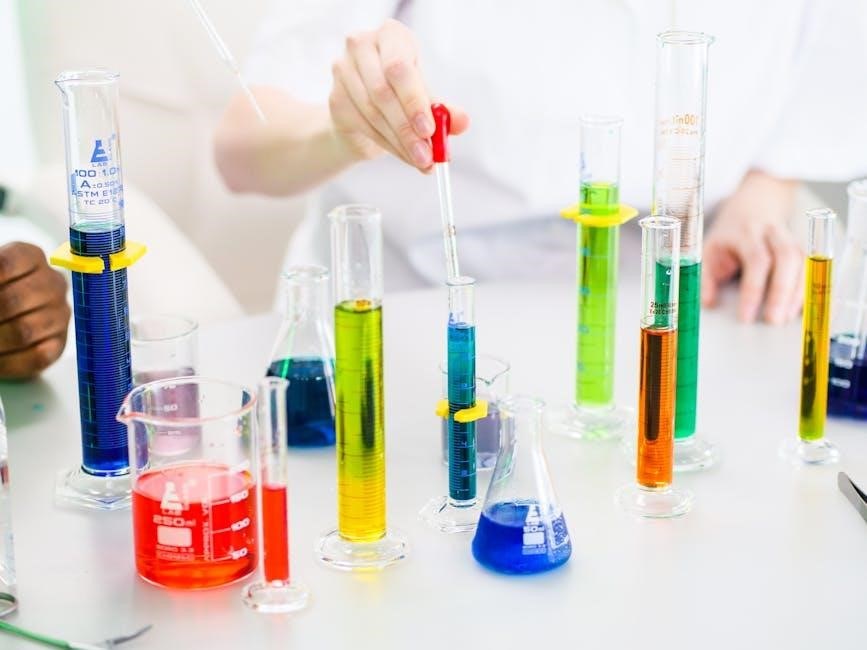
How to Create a Scientific Method Crossword Puzzle
Select relevant terms like hypothesis and variables, then design a grid. Write clear clues for each term, ensuring they align with scientific method steps.
Choosing Relevant Terms
When creating a crossword puzzle, selecting appropriate terms is crucial for clarity and educational value. Common terms include hypothesis, variables, procedure, and conclusion. These words are fundamental to the scientific method and ensure students grasp key concepts. Including terms like control group and experiment adds depth and reinforces understanding. Each term should have a clear definition to avoid confusion. Additionally, incorporating terms such as data and analysis helps cover all stages of the scientific process. By focusing on these essential words, the crossword becomes both engaging and informative, making it an effective learning tool for students of all levels.
Designing the Puzzle Layout
A well-organized crossword puzzle grid is essential for clarity and ease of use. Start by selecting a grid size, such as 15×15, to accommodate key scientific method terms. Ensure symmetry and balance in the grid design to make it visually appealing. Number each clue clearly, with across and down directions, to avoid confusion. Place the grid alongside the clue list for easy reference. Use a clean, readable font and adequate spacing to enhance readability. Avoid overly complex patterns that might frustrate learners. By designing a user-friendly layout, the crossword becomes an engaging and effective educational tool for understanding the scientific method.
Crafting clear and concise clues is crucial for an engaging crossword puzzle. Clues should accurately reflect the scientific method terminology, ensuring students can connect them to the correct answers. Use definitions or riddles that are straightforward yet challenging enough to encourage critical thinking. For example, “A prediction based on research” could lead to the answer “hypothesis.” Avoid ambiguity to prevent confusion. Additionally, incorporate multiple clue types, such as fill-in-the-blank or true/false questions, to cater to different learning styles. By ensuring each clue is both informative and engaging, students are motivated to learn and reinforce their understanding of the scientific method. Access scientific method crossword puzzle answers PDF online through educational websites, teacher-developed materials, and platforms offering customizable templates for interactive learning tools. Educators and students can easily access scientific method crossword puzzle answers PDF through various online platforms. Websites like txcte.org and educational resource hubs offer pre-designed puzzles and answer keys. These templates are customizable, allowing teachers to tailor clues and terms to specific curriculum needs. PDF formats ensure easy printing and sharing, making them ideal for classroom activities. Many resources include answer keys, simplifying grading and feedback. These tools are perfect for reinforcing scientific method concepts in an engaging and interactive way, while saving time on lesson preparation. They cater to diverse learning styles, promoting active participation and better retention of key terms and processes. Educational websites like Jagran Josh and Quizlet offer a variety of scientific method crossword puzzles with answer keys. These platforms provide interactive and downloadable resources, making it easy for students to practice and reinforce their understanding of key concepts. Websites such as nytimes.com and educational blogs feature daily crosswords that often include science-related themes. Additionally, many sites allow customization, enabling teachers to create puzzles tailored to specific lessons. These tools are invaluable for engaging students and promoting active learning. They also offer supplementary materials, such as flashcards and study guides, to enhance the learning experience. Teachers often create personalized crossword puzzles to align with their curriculum, ensuring relevance and engagement for students. These materials, such as crosswords by authors like G. R. Roosta, focus on scientific method steps and vocabulary. Many puzzles include terms like hypothesis, procedure, and variable, with answer keys provided for easy grading. Websites like txcte.org offer downloadable PDFs of these teacher-developed resources, catering to various skill levels. These materials not only reinforce scientific concepts but also promote critical thinking and problem-solving skills. They are often shared among educators to enhance lesson plans and provide students with interactive learning tools. The scientific method crossword puzzle is an engaging and effective tool for reinforcing essential concepts in STEM education. By incorporating key terms like hypothesis, variable, and procedure, these puzzles help students grasp the scientific process in an interactive way. Resources like teacher-developed PDFs and online templates make it easy for educators to integrate these activities into their lesson plans. The combination of fun and learning ensures that students not only retain information but also develop critical thinking skills. As educational tools continue to evolve, crossword puzzles remain a timeless and accessible method for fostering a deeper understanding of the scientific method and its practical applications.Writing Effective Clues
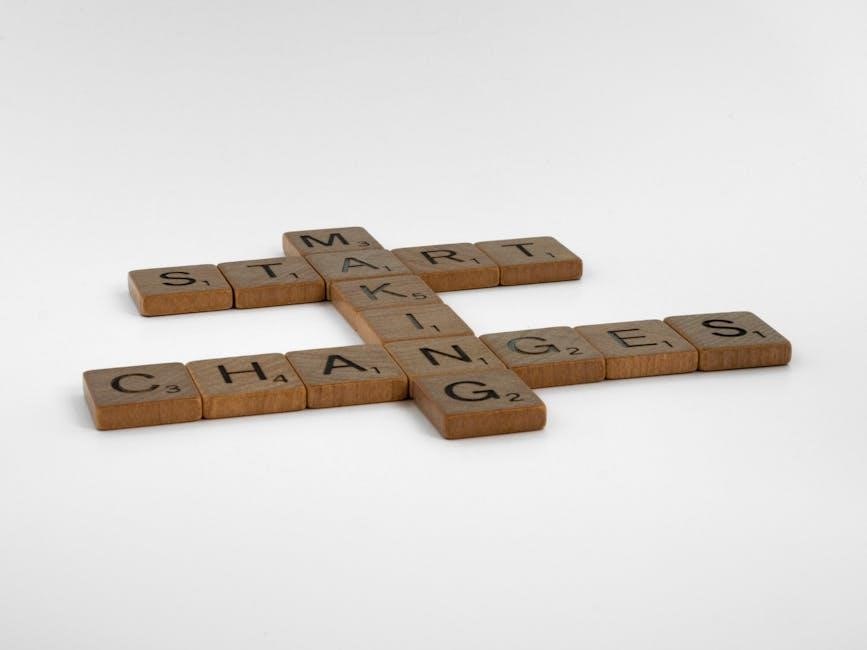
Resources for Scientific Method Crossword Puzzles
Online Templates and PDFs
Educational Websites
Teacher-Developed Materials
